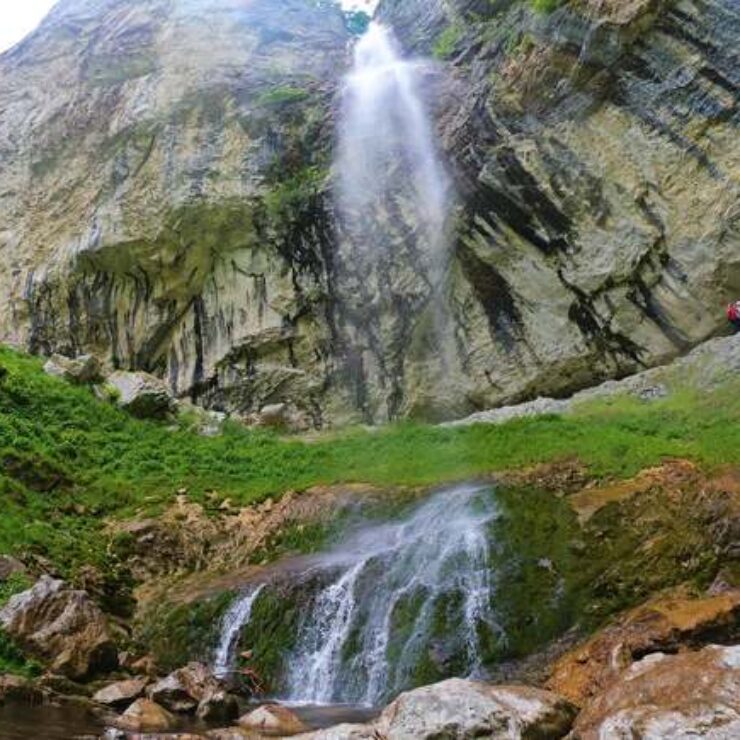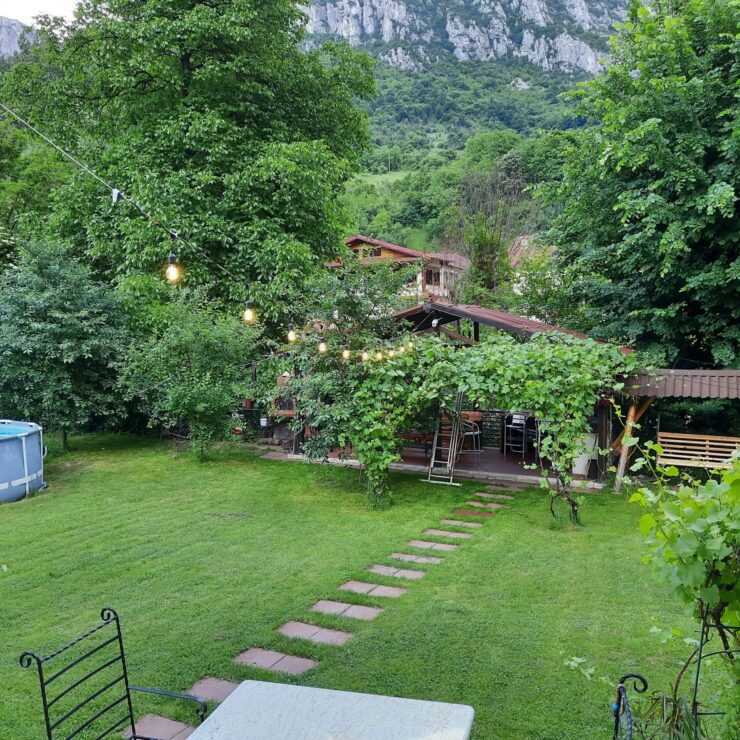The healing properties of the thermal springs in the Cerna Valley were first discovered by the Romans, who arranged baths, temples and monuments dedicated to nymphs and protective deities, such as Aesculapius, Hygeea or Hercules.
The turrets
Also, the pavilions known for their colors are tourist stops for those who want to visit the resort on the Cerna Valley. The Red Gazebo (Elisabeta), located at the highest point, at about 500 m altitude, built at the request of the Empress of Austria-Hungary, Elisabeta (Sissi), after one of its various mountain excursions near the resort (probably in 1887) – not at all unusual because she is known to be a fan of wildlife. The Ciorici gazebo is located on the bevel of a rock at an altitude of 391 m, on the route that goes up from the Roman Hotel to Elisabeta Peak, and further to Poiana cu Peri (red triangle marking).
Also here comes the thematic path “In the footsteps of Empress Elisabeta”, which starts from Izvorului Street, as well as the one marked with a blue triangle, from Diana III Spring, to the Green Fence and Munk Spring. The Yellow gazebo (Jubilee Peak), a path marked with a blue triangle, leaves the branch to the left towards the Munk Spring and leads, after about 20 minutes, to another gazebo, the Yellow one. Today, a curtain of young beeches hides the panorama of yesteryear. It was named “Jubilee Peak” to mark the event celebrated at Băile Herculane on the occasion of the inauguration of the Iron Gates Canal, which facilitated navigation on the Danube, an event attended by the sovereigns of the three riparian countries: King Carol I of Romania, Alexandru I Obrenović Serbia and the Emperor of Austria-Hungary, Franz Joseph. On this “peak” and on the Coronini Plateau, in honor of the distinguished guests, magnificent “flares” (fireworks) were lit. The Green gazebo (Schneller), is located on a small rocky step, just above the Baths of Neptune (Imperial), being relatively easily accessible, in about 15-20 minutes, at a distance of 700 m, on a serpentine path marked with a blue dot, which rises from the Diana III Spring, at the end of Izvorului Street.
Hiking Trails around Baile Herculane
- Baile Herculane – Roman Hotel – Haiducilor Cave – Steam Cave – Empress’s Gazebo – Yellow Gazebo – Munk Spring – Green Gazebo – Diana Spring (“Empress’s Trail”) – Approximate duration: 3 hours (round trip). Markings: blue dot, red dot, and yellow, blue triangle.
- Baile Herculane – Catholic Church – Steam Cave. Duration: 2 ½ hours (round trip).
- Baile Herculane – Still Water Spring – Domogled – WHITE CROSS – SHERBAN’S CAVE – Approximate duration: 3 hours (round trip). Markings: blue cross and yellow ribbon.
- Baile Herculane – Hercules High School – Stadium – Feregari Valley – Prolazului Gorges – Between Stones Cave. Duration: 2 hours (round trip). Marking: red dot.
- Baile Herculane – Pecinisca Quarter – Gaura Ungurului Cave – Pecinisca Gorges. Duration: 2 ½ hours (round trip). Marking: yellow ribbon.
- Baile Herculane – Diana III Spring – Munk Spring – Arendașu’s Cracu – Coronini Plateau. Duration: 2 ½ hours (round trip). Markings: yellow dot, yellow ribbon.
- Baile Herculane – Hercules High School – Prolazului Gorges – Feregari Valley – Colariu Peak. Duration: 3 hours (round trip). Marking: red dot.
- Baile Herculane – “7 Hot Springs” – Ghizelei Cross – Ogașu lui Roșeț – Cociu Waterfall. Duration: 3 hours (round trip). Marking: red dot.
- Baile Herculane – Zavoi Quarter – Coronini Plateau – Green Gazebo – Munk Spring – Yellow Gazebo – Steam Cave – Haiducilor Cave. Duration: 3 hours (round trip). Markings: blue dot, red dot, yellow, blue triangle.
- Baile Herculane – Bridge over Cerna at km 10 – Vânturîtoarea Waterfall. Duration: 2 hours (round trip). Marking: red cross.
The rules for accessing each trail are the same. To maintain biodiversity, conserve natural values, and preserve ecosystem integrity, certain rules must be followed:
- Access to unmarked and mountaineering trails requires prior approval from APNDVC.
- Maintenance of tourist markings, opening of new trails, and placement of signs and information panels require approval from APNDVC.
- Camping is allowed only in specially designated areas and other marked locations.
- Digging trenches around tents is prohibited.
- Open fires are prohibited on PNDVC territory, except in designated camping areas.
- Pre-prepared firewood should be used for fires at the camping site.
- Abandoning any waste on PNDVC territory is prohibited; visitors must remove their generated waste.
- Collection of flora and fauna species is prohibited.
- Destruction of information panels or other tourist attractions is prohibited.


